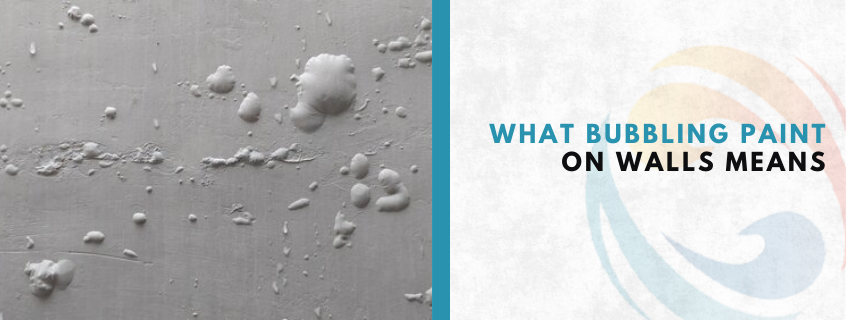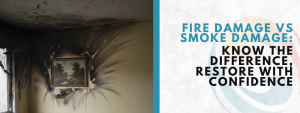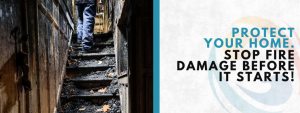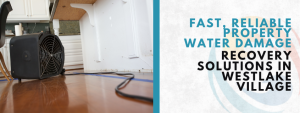
Have you ever noticed strange bubbles forming on your walls? Maybe they started as small blisters but grew over time. That unusual sight might seem harmless, but it’s your wall trying to get your attention. Bubbling paint on walls is not just an eyesore—it’s a signal. And more often than not, it’s warning you about a hidden problem.
So, what does bubbling paint on walls mean? And what should you do when you spot it?
Let’s walk through the answers together so you can recognize the warning signs, fix the damage, and prevent it from happening again. If you’ve spotted moisture-related paint issues, you’ll want to consider fast solutions from a reliable home restoration expert before the damage gets worse.
What Is Bubbling Paint on Walls?
Bubbling paint on walls occurs when the paint separates from the surface beneath, forming raised pockets that look like blisters. These bubbles can be small or large, dry or damp, and sometimes even peel off.
5 Common Reasons for Paint Bubbles
- Moisture behind the wall surface
- High humidity or direct sunlight
- Painting over dirt, oil, or damp surfaces
- Skipping primer or using poor-quality paint
- Applying paint too thickly or too quickly
Imagine trying to stick a label onto a fogged-up mirror. No matter how much pressure you apply, it won’t stay flat. That’s essentially what’s happening behind your walls.
Why Moisture Is the Main Cause of Bubbling Paint on Walls
Among all causes, moisture is the most common. It enters through cracks, leaks, or even high humidity, and eventually pushes its way through the paint layer.
Where Moisture Comes From
- Leaky roofs or pipes
- Poor ventilation in bathrooms or basements
- Windows that aren’t sealed correctly
- Flooding or unaddressed water damage
- Condensation on cold walls
Warning Signs Moisture Is Involved
- Bubbles feel soft or squishy
- A damp or musty smell near the area
- Bubbles return after repainting
- Visible staining or discoloration
If bubbling paint on walls keeps reappearing, chances are there’s an ongoing moisture issue you haven’t resolved yet. In these cases, checking out a full-service water damage repair solution can help identify and fix hidden problems fast.
How to Tell If the Damage Is Serious
Not all paint bubbles mean big trouble. But sometimes, they’re just the beginning.
Signs It’s Just a Surface Problem
- Bubbles appeared right after painting
- Wall underneath is dry and solid
- There’s no odor or discoloration
- Area is far from moisture sources
Signs of a Bigger Issue
- Musty or moldy smell near the wall
- Wall feels soft, damp, or spongy
- Repeated bubbling in the same spot
- Visible dark patches or peeling layers
When bubbling paint on walls is paired with any of the more serious signs, it’s time to dig deeper—or call a professional. If you live near the coast or in high-moisture zones, you may want to learn about specialized cleanup for coastal-area water damage to stop problems early.
How to Fix Bubbling Paint on Walls (DIY Guide)
If the damage is light and the wall is dry, you may be able to fix it yourself. Here’s a step-by-step plan to get smooth, fresh walls again.
Step-by-Step Repair Instructions
- Find the source of the problem
Check for plumbing leaks, moisture, or trapped humidity. Fix the root cause first. - Scrape off the bubbles
Use a putty knife or scraper to gently remove peeling paint. - Sand the area
Smooth down the surface until it blends with the wall. - Let the wall dry
Make sure it’s completely dry before doing anything else. Use fans or dehumidifiers if needed. - Prime the spot
Apply a good-quality primer, especially if the wall was damaged or exposed to moisture. - Repaint carefully
Choose a high-grade paint that’s right for the space (e.g., mildew-resistant paint for bathrooms). - Give it time to dry between coats
Rushing the paint job can cause new bubbles.
This process helps treat most minor cases of bubbling paint on walls, as long as moisture isn’t an ongoing problem.
When You Should Call a Pro
Sometimes, bubbles are a symptom of deeper issues like water damage, mold, or structural wear.
Signs You Need Expert Help
- You smell mildew or musty air near the wall
- Bubbles spread quickly or return after painting
- Paint is cracking or peeling in large sections
- The wall feels soft or sounds hollow when tapped
- The area has a history of water problems
Professionals use tools like moisture meters, infrared scanners, and mold tests to detect hidden problems without tearing open walls.
How to Prevent Bubbling Paint on Walls
Once you fix it, you’ll want to keep it from happening again. Prevention starts with keeping moisture away and painting the right way.
Tips to Keep Your Walls Bubble-Free
- Fix roof, window, and plumbing leaks as soon as they appear
- Ventilate bathrooms and kitchens with exhaust fans
- Use dehumidifiers in damp areas like basements
- Always clean and dry surfaces before painting
- Never skip the primer—it helps paint stick better
- Use paints designed for the space (e.g., anti-mildew in wet areas)
- Let the paint dry fully between coats
Following these habits gives you a better shot at avoiding bubbling paint on walls altogether.
Can Bubbling Paint Hide Mold?
Yes, and that’s one of the most serious concerns. Moisture trapped behind paint doesn’t just create blisters—it can also breed mold.
Clues That Mold Might Be Behind the Paint
- Bubbles are soft, damp, or discolored
- Dark streaks or fuzzy patches peek through
- You smell something musty around the area
- You have allergy symptoms when near the wall
Mold is more than just ugly—it’s bad for your health. Don’t try to scrape or sand it yourself, especially if the wall is damp.
New Homes Aren’t Safe from Bubbling Paint Either
Even in newly built homes, bubbling paint on walls can pop up. It often happens when walls were painted before they were completely dry or when cheap materials were used.
Common Mistakes in New Construction
- Painting before drywall cures completely
- Skipping primer on new walls
- Using mismatched or low-quality paints
- Poor air circulation during construction
- Missing vapor barriers behind walls
If you’re seeing paint bubbles in your new home, check if you’re still under a builder’s warranty. Many builders will fix paint or water-related problems during the first year.
Frequently Asked Questions About Bubbling Paint on Walls
Why is paint bubbling on my walls even though I just repainted?
Fresh paint can bubble if the surface wasn’t dry, clean, or primed properly. Moisture trapped underneath the paint is often the cause, even in newly painted areas.
Can I just paint over the bubbles to fix them?
No, painting over bubbles will not solve the problem and may make it worse. You must remove the bubbles, repair the surface, and address any moisture issues first.
How do I know if the bubbling paint means there’s water damage?
If the bubbles feel soft, keep coming back, or are near plumbing or windows, water damage is likely. A musty smell or wall discoloration can also be key indicators.
What should I do first if I find bubbling paint in my home?
Start by checking for moisture sources like leaks or high humidity in the area. Then scrape off the damaged paint, dry the wall, and repaint properly.
Is bubbling paint dangerous to my health?
It can be if mold is growing behind the paint due to moisture. Mold exposure may cause allergies or respiratory issues, so it’s best to investigate promptly.





